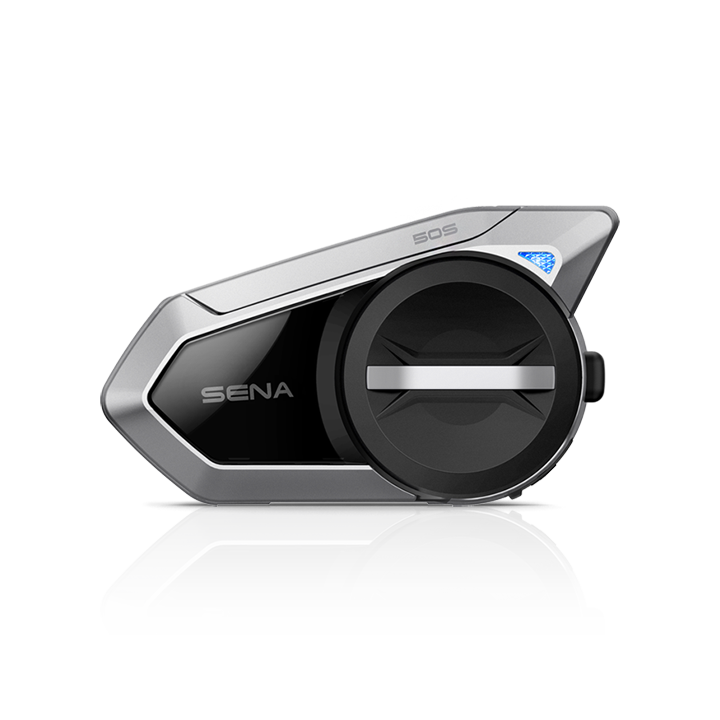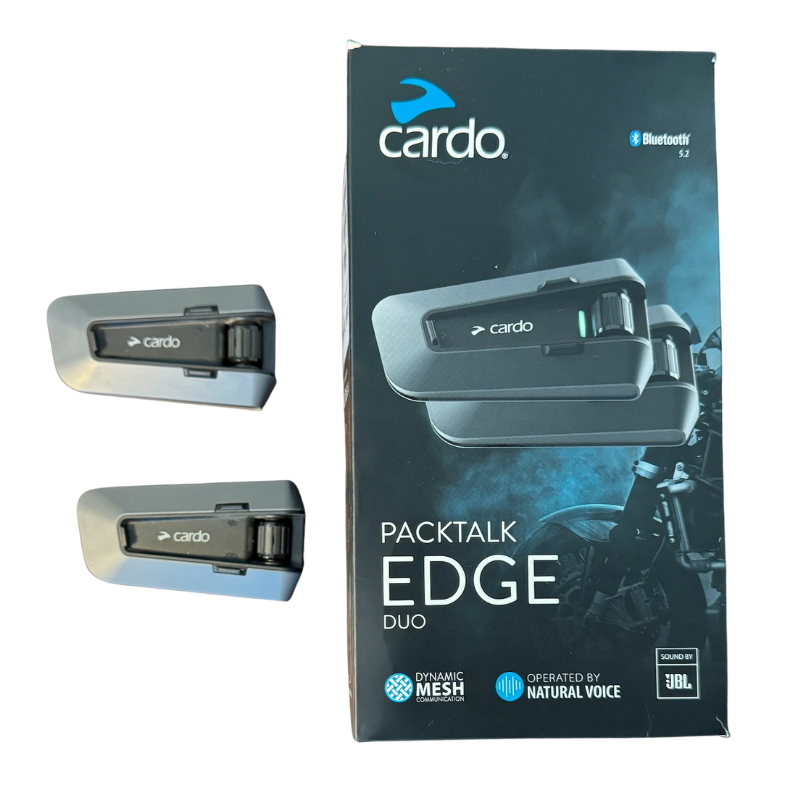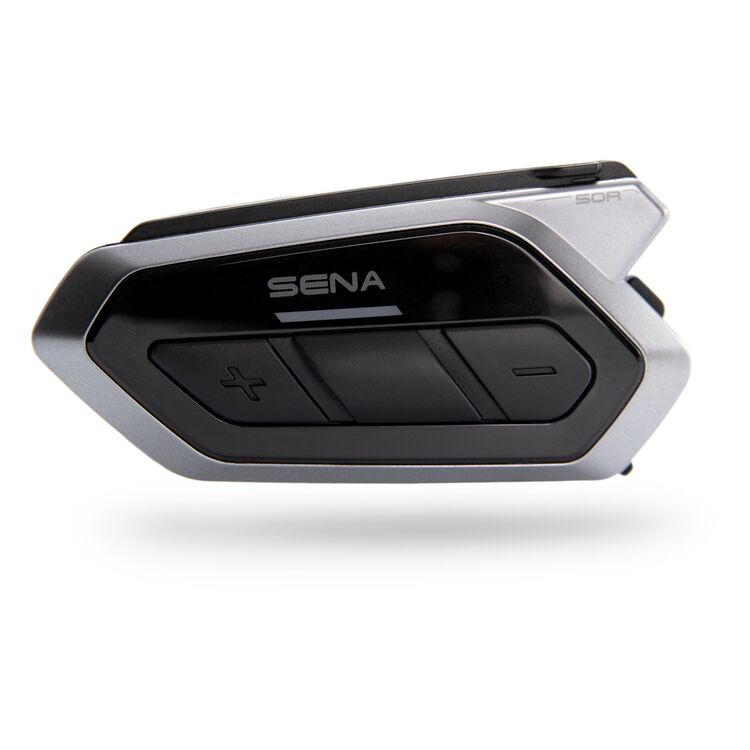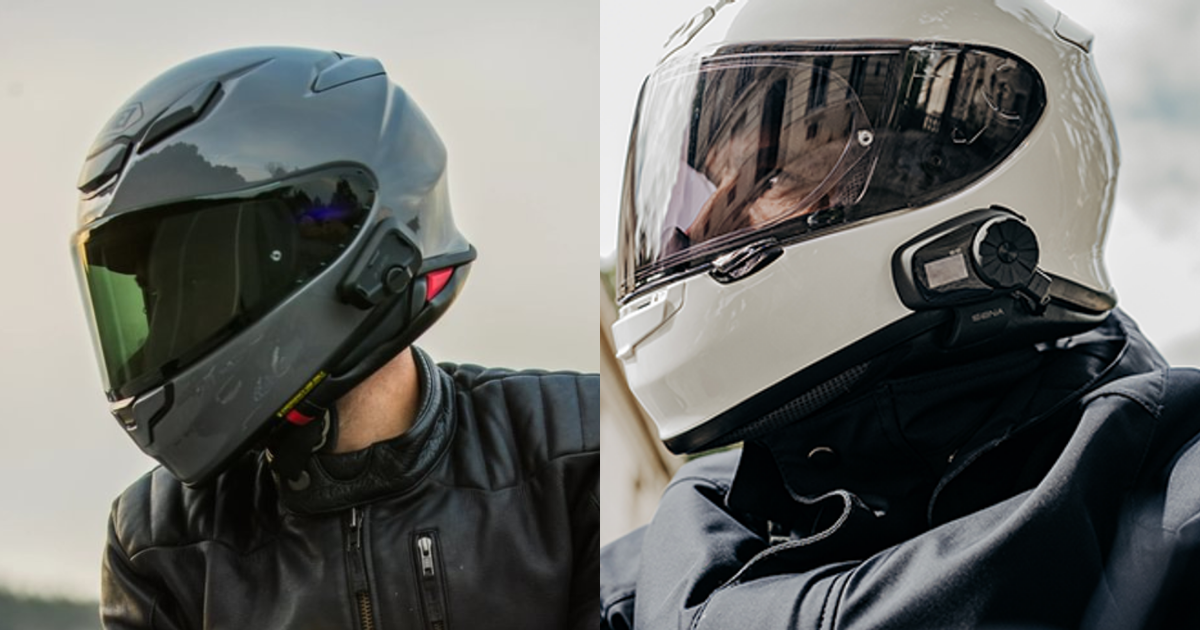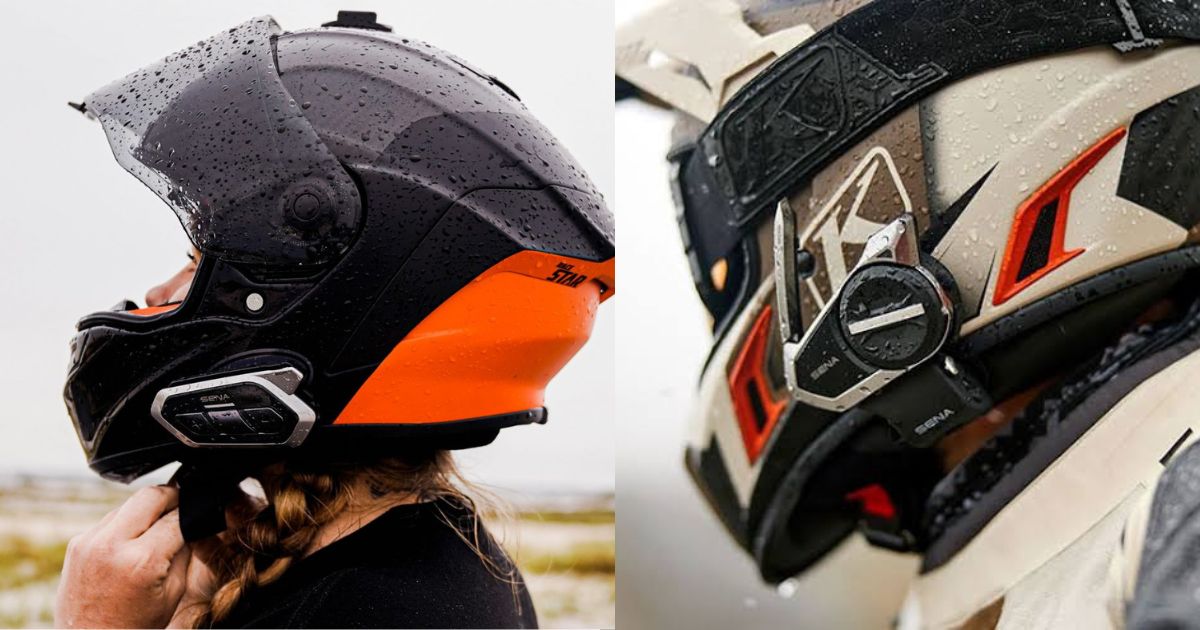
Sena 50S vs 30K: Best Choice for Long-Distance Touring & Groups
left for contents
Choosing a motorcycle intercom can feel like shopping for a new helmet: the options blend, the marketing claims sound similar and the price differences are hard to justify without experience.
Sena’s 50‑series and 30‑series are two of the most popular Bluetooth/mesh communication systems on the market. Both are modular units that clamp onto your helmet and let you talk to other riders, stream music, follow navigation and take calls. The 50S is Sena’s current flagship with Harman Kardon speakers and Mesh 3.0; the older 30K was the company’s first mesh‑enabled unit.
This comparison looks at the 50S and 30K side‑by‑side for touring and group rides, focusing on what matters: battery life, range, audio quality, durability, ease of use and value.
Quick Take: Who Wins the Ride?
Buy the Sena 50S if you:
- Want the latest Mesh 3.0 firmware and better voice‑command support.
- Value richer audio and microphone quality from Harman Kardon speakers and noise‑cancelling mics.
- Ride in groups larger than four and need stable, self‑healing mesh connections.
- Are willing to pay an extra ~$$60–$100 for improved range, sound and a three‑year warranty.
Premium Bluetooth intercom with Harman Kardon speakers and Mesh 2.0 tech for crystal-clear group communication and top-tier audio quality.
- Excellent sound quality (Harman Kardon)
- Long-range Mesh 2.0 intercom
- Easy-to-use jog dial
- Expensive
- Setup can be tricky
- Shorter battery life on Mesh mode
Buy the Sena 30K if you:
- Ride mostly with one or two partners and use mesh occasionally.
- Want to save money; the single‑pack street price is roughly 260–$300 versus 360–$450 for the 50S.
- Are comfortable with slightly shorter battery life and two‑year warranty.
- Don’t ride in heavy rain or plan to protect the unit from water, as neither model has an IP rating but the 30K’s battery door is more exposed.
Feature-rich helmet communicator with Mesh Intercom™ and HD audio multitasking—offers seamless group connectivity and crystal-clear sound for touring riders.
- Reliable mesh connection ensures stable group intercom
- HD speakers deliver clear music and GPS over wind noise
- Audio multitasking lets you listen to music and intercom at once
- Smart auto-reconnect keeps you linked when range is regained
- Complex controls require memorizing button combos for different functions
- Mesh drains battery faster than Bluetooth—may not last a full-day ride
The 50S justifies its premium if you prioritize sound quality and group‑ride performance. For riders who mainly need Bluetooth intercom and occasional mesh for small groups, the 30K offers similar functionality at a lower price.
Side-by-Side Snapshot: What the Numbers Say
| Specs | Sena 50S | Sena 30K |
|---|---|---|
| Weight | 64 g (main module) | 61 g (main module) |
| Fit / Installation | Universal clamp and adhesive mount; includes boom and wired mics, upgraded premium speakers. | Universal clamp and adhesive mount; includes boom and wired mics; original HD speakers. |
| Communication Modes | Mesh Intercom 3.0; Group Mesh with up to 24 riders; Open Mesh with virtually unlimited riders; Bluetooth 5.0 intercom up to 2 km; supports up to 6 channels. | Mesh Intercom with up to 16 riders in group; open‑mesh unlimited; Bluetooth 5.0 intercom up to 2 km; 6 mesh channels. |
| Audio & Microphone | Sound by Harman Kardon; 40 mm speakers and redesigned microphone for improved low‑end and clarity. | HD speakers (6.5 mm thick) with SBC codec; optional HD speaker upgrade kit. |
| Battery Life | Bluetooth talk time ~16 h; Mesh talk time ~13 h; quick‑charge: 20 min = 2 h talk. Real‑world tests found ~9 h 40 m in Mesh before needing a charge. | Bluetooth talk time up to 17 h; Mesh up to 14 h; but owners report ~8–10 h when using mesh consistently and shorter with long‑distance group rides. |
| Charging | USB‑C; includes a Wi‑Fi adapter cable that automatically installs firmware updates when connected to Wi‑Fi. | Micro‑USB; optional Wi‑Fi adapter cable or Wi‑Fi Docking Station (the dock is micro‑USB only and works with 30K/20S EVO; not compatible with the USB‑C‑equipped 50S) |
| Water Resistance | No official IP rating; 50S has improved seals but still vulnerable to heavy rain (riders report shutdown in downpours). | No IP rating; earlier mesh generation; battery door less secure; more prone to water ingress. |
| Warranty | 3‑year manufacturer warranty. | 2‑year manufacturer warranty. |
| Street Price (typical, single pack) | Around $$360–$450 as of Aug 2025 (MSRP $339; Amazon dual pack ~$499–$543). | Around $$260–$300; LawAbidingBiker lists the HD‑speaker kit at $299 and European retailers around €258 (~$280). |
Which Rider Fits Each Headset?
Sena 50S:
- You ride in large groups or join organized tours where self‑healing mesh and channel selection are critical. Mesh 3.0 automatically reconnects riders who drop out and supports up to 24 participants.
- Sound quality matters; the Harman Kardon speakers have fuller bass and less distortion at highway volume, and the updated microphone reduces wind noise. Riders who listen to music or take calls will appreciate the upgrade.
- You want a user‑friendly charging and update system; the Wi‑Fi adapter cable charges the unit and automatically installs firmware updates when connected to a Wi‑Fi network, eliminating the need to connect to a computer.
- Longer warranty and customer support give peace of mind. The 50S includes a three‑year warranty versus two years on the 30K.
- You’re willing to pay more (~$$60–$100 extra) to future‑proof your intercom for several seasons.
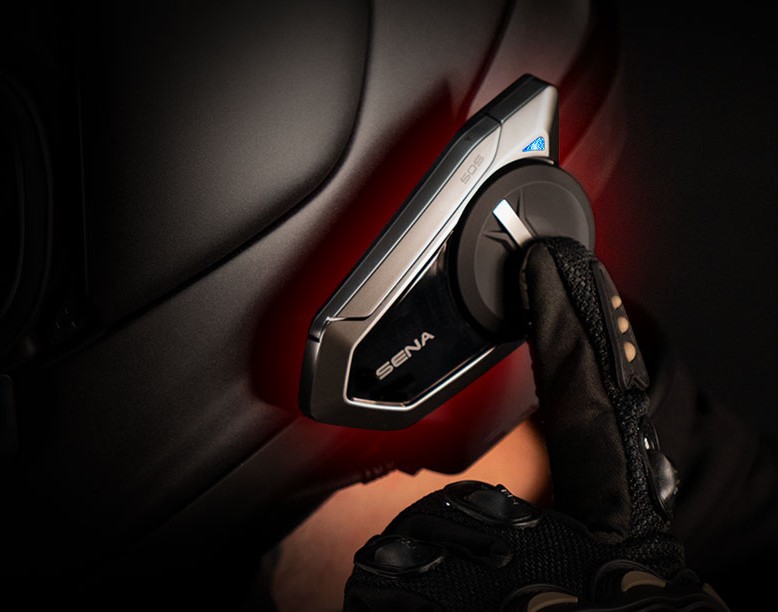
Sena 30K:
- You primarily ride with one passenger or a small group and mostly use Bluetooth for music and phone calls. Mesh functionality is there when needed but not a daily requirement.
- Upfront cost is a priority; the 30K single kit typically retails around $$260–$300, making it a budget‑friendly entry into mesh communication.
- You don’t need premium speakers; the HD speakers provide adequate clarity for intercom and podcasts. Upgrading to Sena’s separate “HD speaker kit” costs less than stepping up to the 50S.
- You accept shorter battery life in mesh and plan to charge during lunch stops. A portable power bank can keep the unit running on multiday tours.
- You ride in dry conditions or protect electronics from rain; the 30K is more susceptible to water ingress due to its micro‑USB port and older seal design.
- You appreciate the option of a Wi‑Fi Docking Station; Sena offers a micro‑USB dock that charges and updates the 30K (and 20S EVO) automatically. However, this dock does not work with the USB‑C‑equipped 50S.

Straight from the Saddle: Rider Feedback
Feedback from long‑term users and independent reviews shows a clear pattern. Testers from Bennetts BikeSocial found the 50S’s claimed 13‑hour mesh talk time optimistic; during a mix of music streaming and intercom use they reached about 9 hours 40 minutes before needing to charge. They praised the quick‑charge feature—20 minutes on a charger adds roughly two hours of talk—and liked that the Wi‑Fi dock keeps firmware current. However, water ingress is a recurring complaint: riding through sustained rain caused one 50S to shut off until it dried out, as the unit lacks an official IP rating.

For the 30K, Motorcycle.com’s tester noted that mesh mode drains the battery quickly; the unit often could not last a full day of riding, necessitating a midday charge. Real‑world mesh range was about half a mile, far less than the advertised 1.2 miles, and connection stability decreased with each added rider. Audio quality is fine for conversations but less satisfying for music; some owners report an electronic whine when paired with earbuds. Voice commands work reliably at low speeds but only about 60 percent of the time at highway speeds.
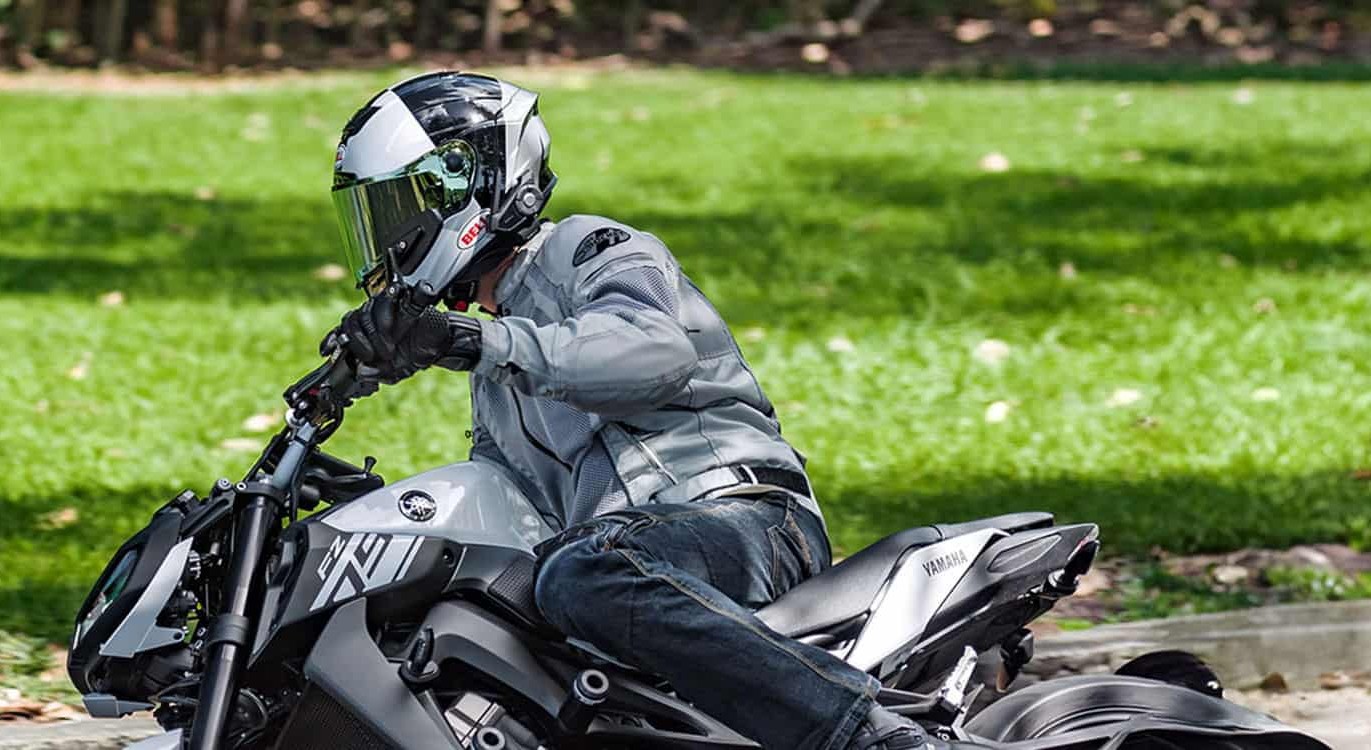
User reviews on forums echo these findings. Multiple owners of both models report that mesh range and clarity depend heavily on line of sight; tall hills and curves dramatically shorten usable range. The 50S generally reconnects more quickly when riders drop out of range. Riders appreciate the 30K’s ability to mix audio (stream music while chatting) but dislike the need to update firmware via a computer. Water resistance is a recurring discussion: some claim their 30K has survived summer storms without issue, while others have had units fail after heavy rain; the consensus is to avoid leaving either model exposed for long periods or invest in a rain cover.
Category Showdown: Where Each Headset Shines
Audio Quality & Volume
The 50S leverages Harman Kardon’s tuning to produce fuller bass and clear mids. At highway speeds (80–100 km/h), riders note less distortion when listening to music at maximum volume. The redesigned microphone further reduces wind noise, improving phone‑call clarity.
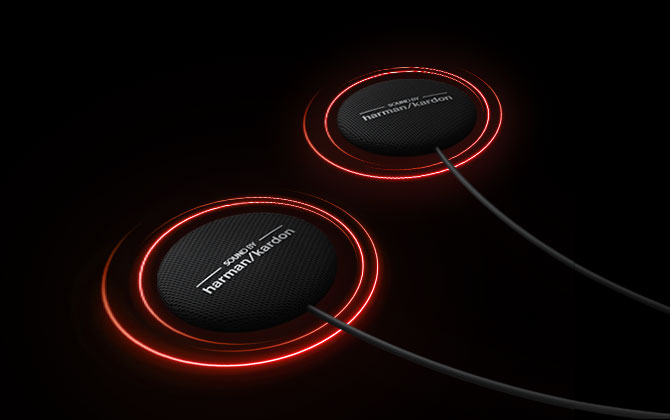
The 30K’s stock speakers are thinner and rely on the standard SBC codec; voices are crisp but music lacks depth. Upgrading the 30K with Sena’s HD speakers narrows the gap but still falls short of the 50S’s richer sound.
If you primarily use the intercom for voice chats, the difference is minor; audiophiles who stream music will perceive a bigger improvement with the 50S.
Mesh Range & Stability
Both headsets advertise a 2 km (1.2 mile) Bluetooth range in perfect conditions, yet real‑world tests tell a different story. Our range roundup found the 50S achieved about 1.23 km on Bluetooth and 960 m on Mesh before audio degraded. The 30K’s mesh range averaged 0.6 km (0.37 mile) and dropped further with each additional rider.
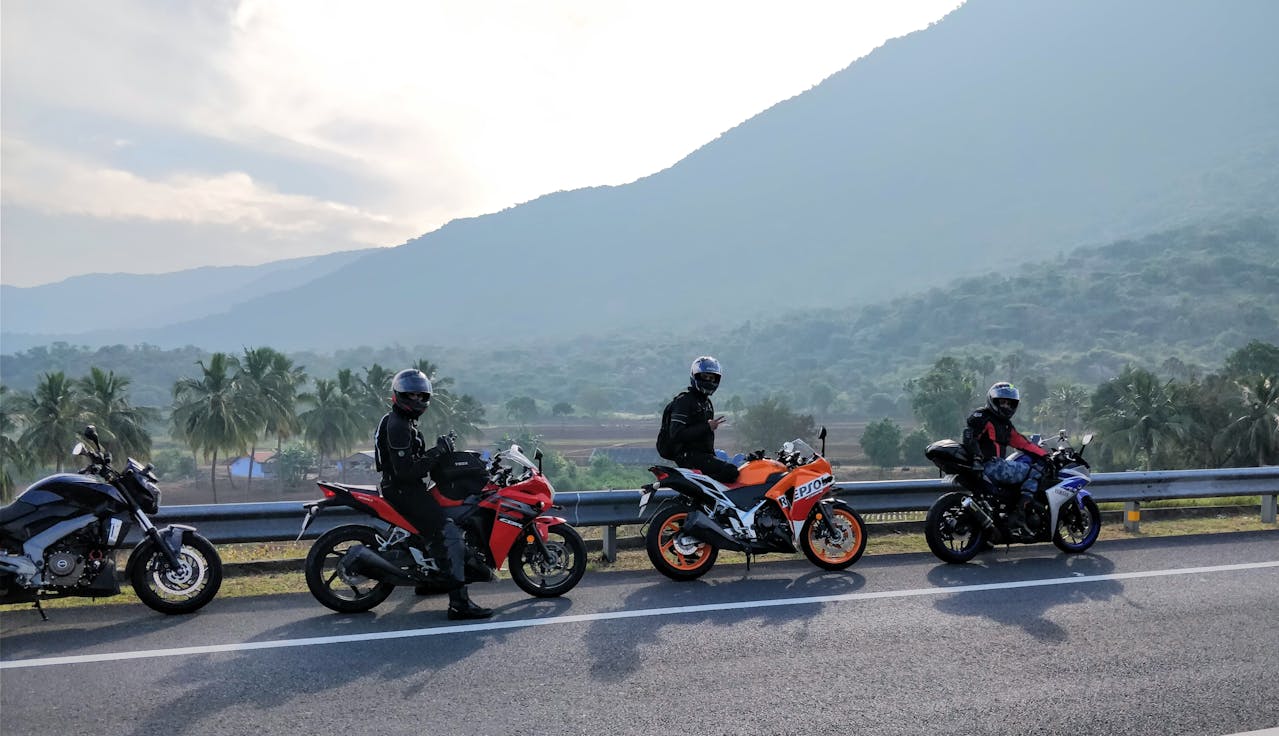
The 50S uses Mesh 3.0, which automatically finds and maintains connections with multiple participants and channels; riders report fewer dropouts and quicker reconnections than with the 30K’s first‑generation mesh.
For small groups the difference may not be deal‑breaking, but if you ride with six or more riders, the 50S provides a noticeably more reliable link.
Battery Life & Charging Convenience
On paper, the 30K lists slightly longer talk times (17 h Bluetooth, 14 h mesh) than the 50S (16 h Bluetooth, 13 h mesh). In practice, the 50S’s larger battery and USB‑C quick‑charge offset the difference. During independent tests, the 50S delivered around 9–10 hours of mixed use and gained about two hours of talk time from a 20‑minute charge. The 30K lasted around 8–10 hours on mesh in reviewer tests and took longer to charge via micro‑USB
The 50S’s Wi‑Fi adapter cable also keeps firmware current without plugging into a computer—an underrated convenience for multi‑day tours.
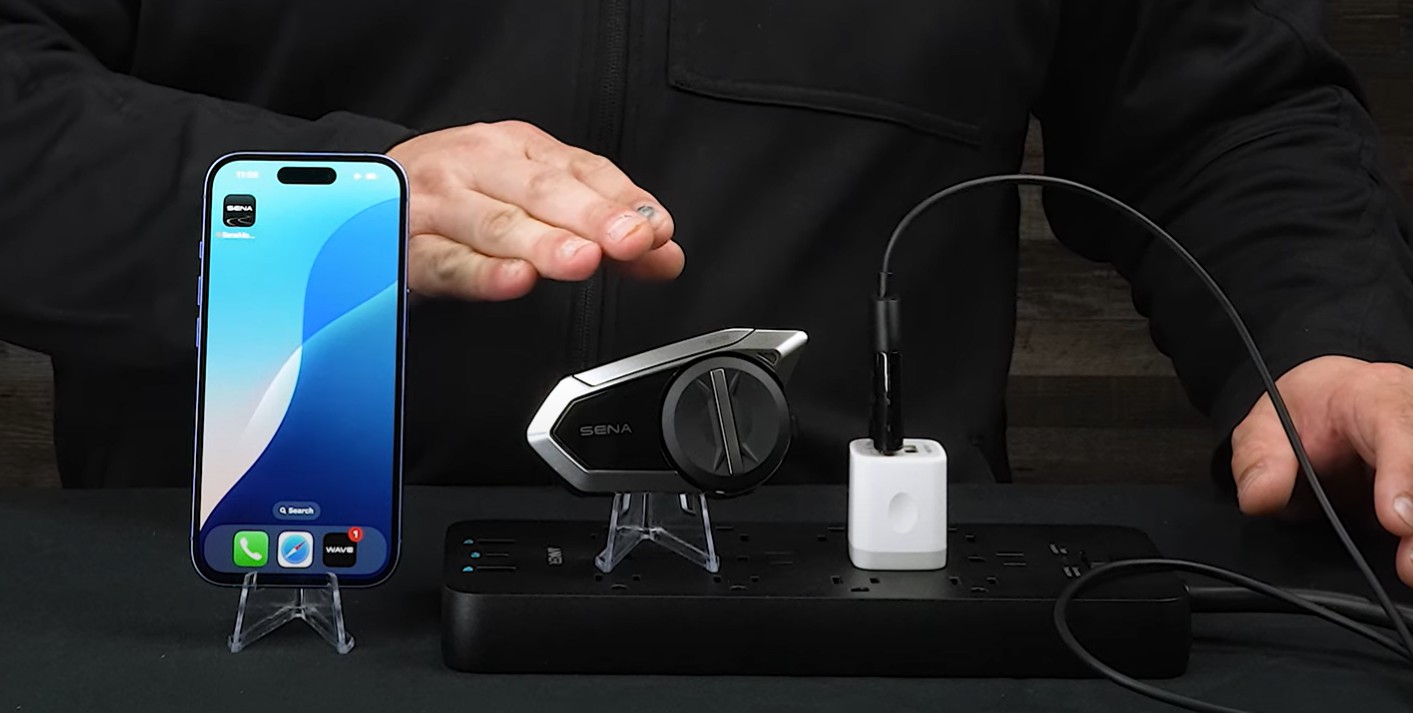
Unlike the 50S, the 30K can be paired with Sena’s optional Wi‑Fi Docking Station for automatic charging and updates; however, this dock uses a micro‑USB connection and only works with 30K and 20S EVO units—it is not compatible with the USB‑C‑equipped 50S.

Ease of Use & App Experience
Both intercoms share Sena’s familiar jog‑dial and two‑button layout. The 50S retains this hardware but adds improved voice command recognition and a more robust smartphone app. Mesh 3.0 introduces multi‑channel selection, letting you choose between six channels and isolate conversations. The app also integrates audio equalizer settings and the ability to prioritize intercom or music audio.
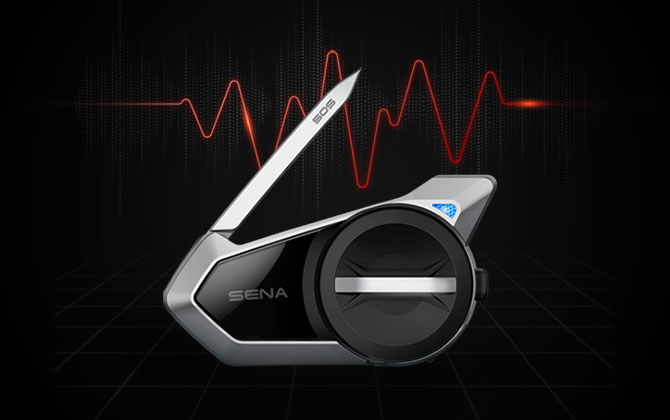
The 30K uses an older app that occasionally loses device pairing after firmware updates; riders have reported needing to uninstall and reinstall the app to restore functionality. Voice commands on the 30K work well at low speeds but become less responsive with wind noise; the 50S’s microphone and updated software improve recognition.
Mounting & Compatibility
Mounting kits are almost identical. Both systems clamp onto the lower edge of most full‑face, modular and adventure helmets and include adhesive pads for difficult shell shapes. The 50S comes with the premium speaker kit pre‑installed; the 30K’s kit includes HD speakers but they’re not as well tuned.
Both units pair with other Sena devices, accept multi‑point pairing (e.g., phone + GPS), support Siri/Google Assistant and can be updated via computer or Wi‑Fi adapter cable.
There’s also a Wi‑Fi Docking Station accessory, but it uses a micro‑USB connector and works only with the 30K/20S EVO; the dock cannot connect to the USB‑C‑equipped 50S.
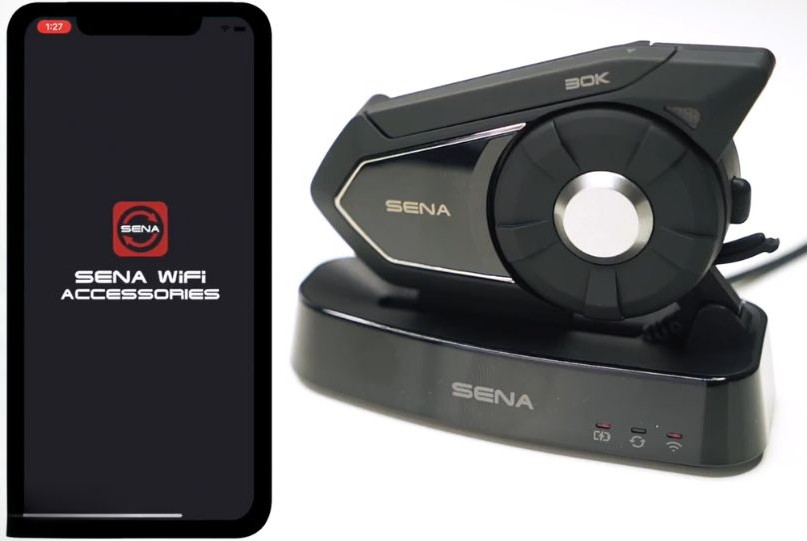
Sena’s universal intercom feature allows pairing with other brands, but note that older 30‑series units require a convoluted “bridge” process which can be finicky; our internal guide to pairing Sena & Cardo explains the workaround. The 50S handles cross‑brand pairing more gracefully due to updated firmware.
Durability & Weather Protection
Neither unit is rated waterproof, a surprising omission for premium electronics.
The 50S addresses some earlier complaints with improved seals and a rubber gasket around the USB‑C port. Nonetheless, heavy rain and prolonged exposure can still cause shutdowns or crackling audio; one reviewer’s unit died mid‑journey after a storm.
The 30K uses a micro‑USB port with a thin rubber flap; riders report that dust and moisture eventually cause charging problems or connectivity issues.
In our experience, both systems benefit from a simple aftermarket silicone cover or being removed during washing. If you ride in tropical climates or monsoon‑like rains, consider alternatives with verified water‑resistance or plan to protect the units under a peak or hat.
Is the Extra Cash Fuel Well Spent?
With the 50S typically retailing about 360–$450** and the 30K around **260–$300, the difference may seem modest—roughly the cost of a dinner on a multiday tour.

The decision hinges on your priorities:
- Sound & Experience: If you value high‑fidelity audio, improved voice commands and the convenience of automatic updates, the 50S delivers a noticeably better daily experience. The Harman Kardon speakers alone might justify the price for music lovers.
- Group Ride Performance: Riders who frequently join large groups or organized rallies will appreciate Mesh 3.0’s stability and channel features. Dropped connections are less frequent and reconnections happen automatically, reducing the frustration of fiddling with buttons while riding.
- Longevity & Support: The three‑year warranty and continued firmware updates mean the 50S will remain compatible with future devices and bug fixes. As new features like remote‑controlled camera integration roll out, the 50S will likely receive them first.
- Budget & Basic Use: Conversely, if you primarily ride solo or with one passenger, rarely use mesh and are happy to plug your intercom into a computer occasionally, the 30K covers all the basics for less money. You still get mesh for small groups, advanced noise control and universal intercom support. Upgrading the speakers later costs less than replacing the whole unit.
Other Routes to Consider
Cardo Packtalk Edge – Our top‑rated mesh communicator. It offers waterproof IP67 certification, dynamic mesh with excellent range and a magnet mount. It is more expensive (~$$389 for single), but riders who prioritize weather sealing and seamless connectivity find it worth the premium.
The Gold Standard in motorcycle communication units. Simple to use, rugged and reliable, with premium sound and long battery life.
- 1.6 km (~1 mi) unit‑to‑unit range (works through obstacles, we've tested)
- Up to 8 km (5 mi) group range
- 13 hr battery life
- Magnetic Air‑Mount snaps securely
- Fiddly to remove with gloves
- Not ideal if your crew all use Sena
Sena 50R – A slimmed‑down version of the 50S with a low‑profile housing and button‑only interface instead of a jog dial. It shares the same Mesh 3.0 firmware and Harman Kardon speakers; recommended for riders seeking minimal wind drag.
Low-profile intercom with Mesh 3.0 and Harman Kardon audio delivers rugged, seamless group comms and immersive music while on the move—built for adventure riders.
- Rugged design resists rain and tracks well to your helmet
- Crisp HD Harman Kardon audio cuts wind noise at speed
- Mesh 3.0 auto‑routes signals for stable group connections
- Rapid USB-C charging delivers hours of use in minutes
- Hard‑wired speakers make swapping helmets a hassle
- Voice commands may have occasional choppiness at speed
Sena 50C – Combines a Mesh 2.0 communicator with an integrated 4K action camera. Battery life is shorter due to recording; ideal for vloggers or riders who want to document their journeys without extra mounts.
All‑in‑one helmet comm and 4K camera with Mesh Intercom 3.0 and Harman Kardon sound—captures every ride while keeping you connected and crystal-clear on the go.
- Mesh 3.0 ensures seamless group comms across long distances
- 4K camera captures high-resolution video and stills
- Harman Kardon audio delivers clear music and call quality
- Voice commands (“Hey Sena”) let you control camera hands‑free
- Firmware setup and app integration can be finicky at launch
- Wi‑Fi reconnects may drop video occasionally during riding
If you’re still comparing communicators, our best Motorcycle Bluetooth headset or intercom roundup ranks the 50S/50R among the top picks and explores other contenders.
Frequently Asked Questions
Can you pair a Sena 50S with a Sena 30K?
Yes. All Sena mesh units can talk via Open Mesh; they join the same channel by default. For Bluetooth intercom, the units can pair using the universal intercom feature. Pairing processes differ slightly—refer to your manuals or our pairing guide.
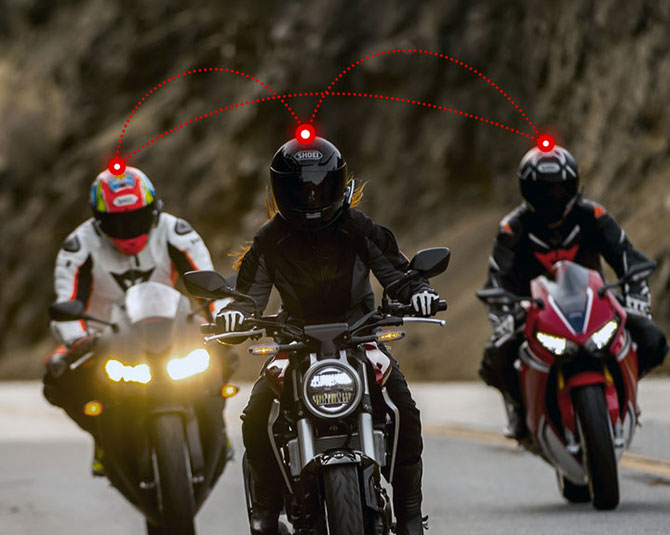
How far can the 50S and 30K reach?
In ideal conditions both claim a 1.2 mile Bluetooth range. Independent tests recorded about 1.23 km for the 50S and around 0.6 km for the 30K in mesh mode. Terrain, buildings and other riders reduce range.
Do either units support fast charging?
Yes. The 50S uses USB‑C quick charge—20 minutes yields roughly two hours of talk time. The 30K’s quick charge provides about two hours of talk from a 20‑minute charge as well, but it uses micro‑USB and lacks USB‑C’s durability.
Are these headsets waterproof?
No. Neither model has an official IP rating. Riders report varying experiences; some units survive heavy rain while others shut off. Consider using a rain cover or removing the device in storms.

Can I update firmware without a computer?
The 50S includes a Wi‑Fi adapter cable that charges and automatically installs updates. The 30K offers a separate Wi‑Fi adapter cable but most bundles require plugging the unit into a PC to update via Sena’s Device Manager. For 30K (and 20S EVO) owners who prefer a hands‑off approach, Sena sells a Wi‑Fi Docking Station that charges and updates the unit automatically via Wi‑Fi; this dock uses micro‑USB and is not compatible with the USB‑C‑equipped 50S.
Is there a volume difference between the models?
The 50S’s Harman Kardon speakers play louder without distorting. The 30K is adequate for intercom and GPS prompts but might struggle to overpower wind noise at highway speeds. Earplugs or third‑party speakers help.
How long do the batteries last before replacement?
Lithium‑polymer batteries degrade over time. After roughly 500 charge cycles (2–3 years of frequent use), users report reduced run time. Both units have sealed batteries, so replacement requires factory service or buying a new module.
Love a helmet that only fits a specific comms unit?
HJC, Shoei, Schuberth, Nexx and even Harley all try to force you in to custom-fit comms units that may not fit how you ride. So Tubs Jackson created an adapter to get a factory fit for any comms unit on these otherwise amazing helmets.
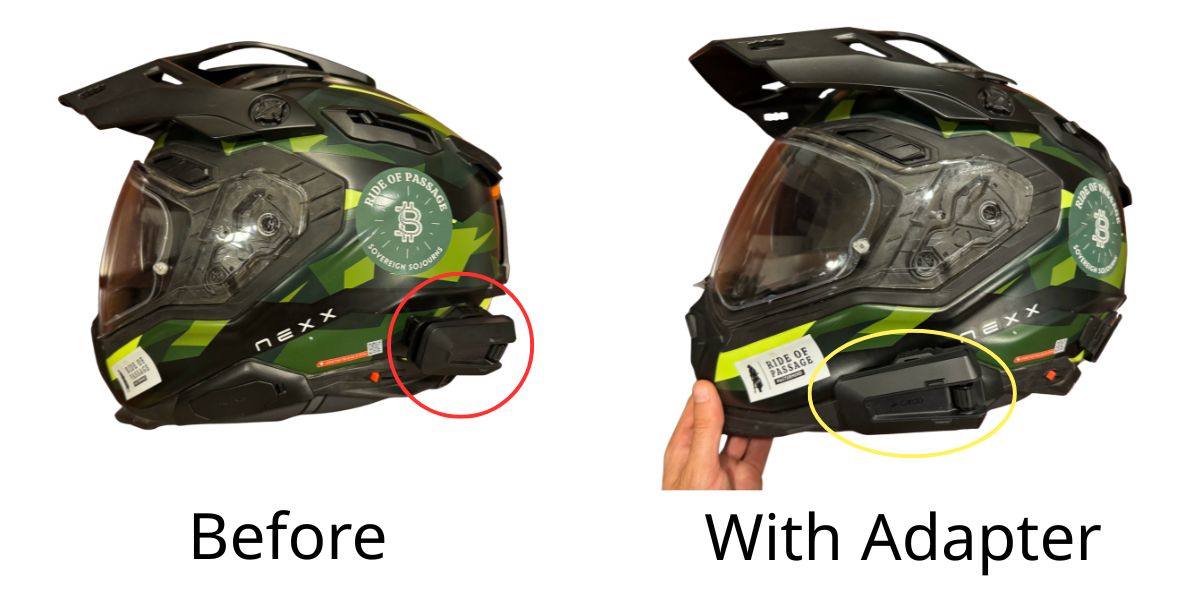
Tubs Jackson is a weird name, I know, but I have their adapter in my Nexx X.WED3 helmet and it’s rock solid. Much nicer than reaching way back to where I had the sticky mount before. I wish I’d thought of this idea.
Tip: Get FREE SHIPPING just by buying here or using code BETTERONTHEROAD at checkout.
Wrapping Up…
In the end, choosing between the Sena 50S and 30K comes down to how much you value premium audio, robust mesh performance and future‑proof convenience versus a lower price and solid basics.
If sound quality, group‑ride stability and automatic updates matter most, the 50S is worth the extra investment; otherwise, the 30K provides reliable communication at a budget‑friendly price for smaller groups and casual touring.
Premium Bluetooth intercom with Harman Kardon speakers and Mesh 2.0 tech for crystal-clear group communication and top-tier audio quality. | Feature-rich helmet communicator with Mesh Intercom™ and HD audio multitasking—offers seamless group connectivity and crystal-clear sound for touring riders. |
|
|
|
|
Premium Bluetooth intercom with Harman Kardon speakers and Mesh 2.0 tech for crystal-clear group communication and top-tier audio quality.
- Excellent sound quality (Harman Kardon)
- Long-range Mesh 2.0 intercom
- Easy-to-use jog dial
- Expensive
- Setup can be tricky
- Shorter battery life on Mesh mode
Feature-rich helmet communicator with Mesh Intercom™ and HD audio multitasking—offers seamless group connectivity and crystal-clear sound for touring riders.
- Reliable mesh connection ensures stable group intercom
- HD speakers deliver clear music and GPS over wind noise
- Audio multitasking lets you listen to music and intercom at once
- Smart auto-reconnect keeps you linked when range is regained
- Complex controls require memorizing button combos for different functions
- Mesh drains battery faster than Bluetooth—may not last a full-day ride
Related

Best Cardo Communicators for Motorcycle Riders
Find the best Cardo communicator for your rides—compare mesh, Bluetooth, sound, and features to match your budget, group size, and style.

